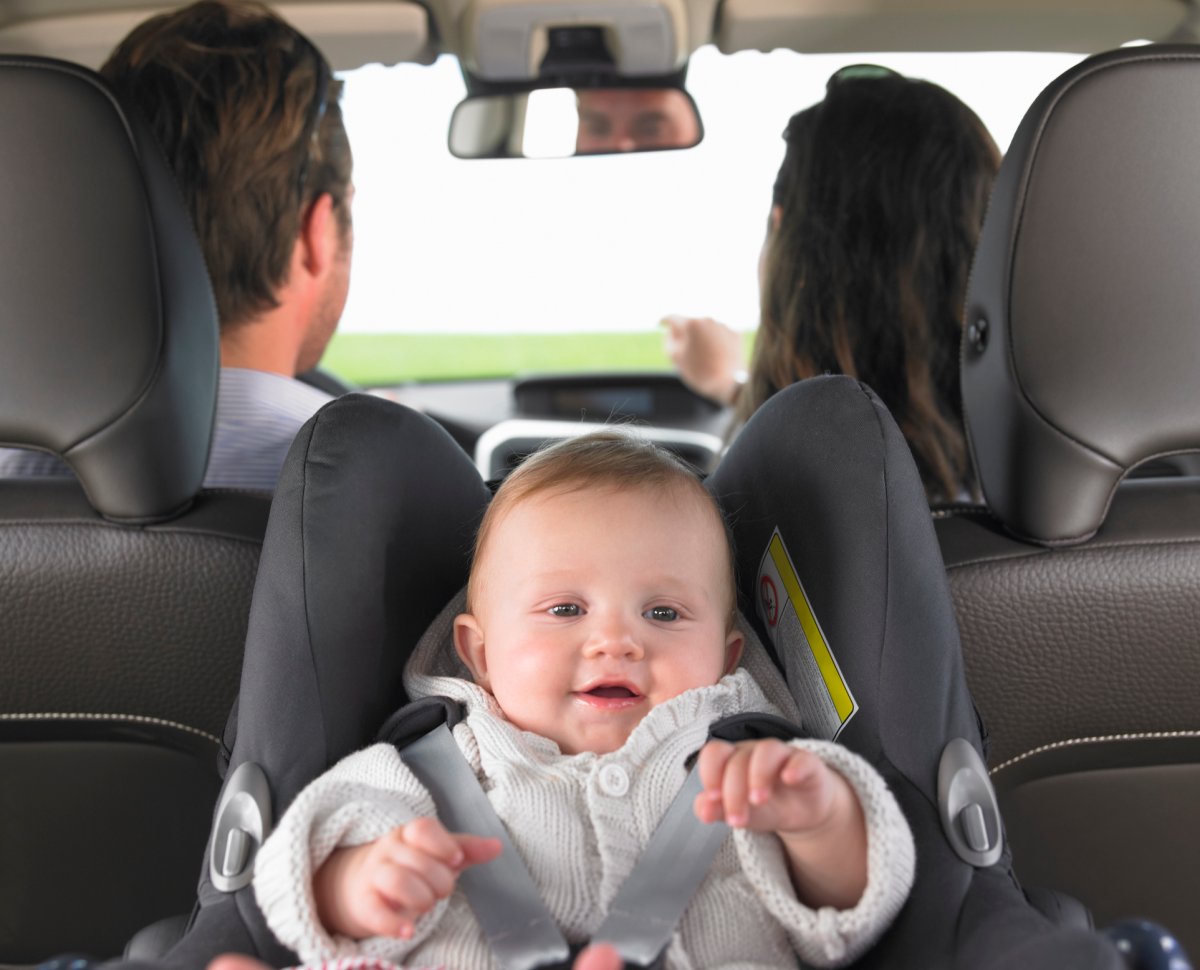Parents, when you strap your child into their car seat, how confident are you that you’ve done it properly?

Are you certain enough that you’re willing to take mom Rachel McNamara’s test by flipping your baby upside down while your little one is strapped in to the seat?
READ MORE: Is your car seat safe? Common mistakes that can put your child at risk
Last week, the U.S. mom of three from Greene, Maine, posted a photo on Facebook of her flipping her child up in the air and upside down onto his back while buckled in to his car seat. Her post went viral.
Her post came with some advice on car seat safety: “After strapping your child into their car seat, ask yourself if you’d be comfortable flipping it upside down. Remember that the chest clip should be at armpit level and the straps should be tight enough to pass the pinch test.”
Her demonstration was a quick hit online and has been shared over 48,900 times and liked over 11,000 since it was posted on March 17.
McNamara has since updated her post clarifying her stance and offering more tips for parents about car seats.
“I’d like to clarify that I’m not advocating that parents should be flipping their kids upside down before every car ride,” she writes. “Just that they should feel confident that their child would be safe IF the car seat was flipped over in an accident. I think this is a great visual and shows just how important proper seat use is.”
Her post sparked a conversation among parents, some thanking the mom for her analogy to others who suggested it wasn’t a safe test.
“I still wouldn’t do this,” says Becca Waterworth. “No matter how safe your car seat is, it’s still not a good idea to be flipping your kid around in it. No matter the car seat you could still easily bruise them or the seatbelt could rub them too hard or they could hurt their head or just so many things… Not a good idea.”
“I understand the meaning but I’m way too nervous to actually flip my son’s car seat upside down with him in it,” writes Facebook user Holly Fox. “I always make sure he is in it correctly though.”
But is this how parents should be testing their car seat safety skills? This is precious cargo you’re carrying around, after all.
- What is a halal mortgage? How interest-free home financing works in Canada
- Ontario doctors offer solutions to help address shortage of family physicians
- Bird flu virus detected in U.S. grocery store milk. FDA says supply still safe
- ‘Dangerous message’: Experts slam anti-sunscreen claims circulating online
Before you try flipping your child upside down, Parachute Canada spokesperson Stephanie Cowle suggests parents try few other tests in its place.
“We’re definitely excited to see a conversation happening around car seat safety and we’re glad that there’s something out there generating this awareness,” Cowle says. “But there are other ways to test out the seats that we recommend.”
READ MORE: Car seat credited for saving life of 4-year-old after two-vehicle crash in Aylmer
A simple way parents can check if the car seat is installed correctly in the car is by grabbing the base of the seat and give it a shake forward to backwards and side-to-side, Cowle says. If the seat doesn’t move more than an inch in any direction, then it has been installed correctly.
To make sure if your child is secure in the seat, Cowle says parents need to make sure that the harness is in correctly and securely. This means the chest clip should be flat at about the armpit level of the child. Parents need to check that it’s at the proper level every time because the clip can slide down when a child is removed from the seat.
Another way to test if your child is in correctly is by doing the pinch test. Parents should check on the shoulder straps of the harness to make sure they’re tight enough by pinching the straps. If parents can gather material within their pinch, then the straps are too loose. According to Cowle, parents’ fingers should be able to just slide across the material if the straps are done properly.
According to Transport Canada, the rates at which parents prematurely transition their children to the next stage of child restraints decreased between 2006 and 2010.
For example, infants in car seats facing forward decreased from 37 per cent in 2006 to 9 per cent in 2010.
The region in Canada with the highest level of correct use of child seats was the Yukon at about 91 per cent. The region with the lowest level of correct use was Saskatchewan at about 53 per cent.
The age group with the lowest correct use of car seats was between four and eight years of age at almost 40 per cent.
For more tips on car seat safety, visit the Transport Canada and Parachute Canada websites.







Comments